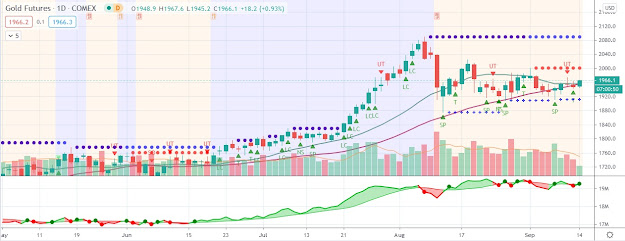Gold is going up, down or sideways dependent on what is going on in the euro/dollar rate
The gold price recovered from earlier losses on Tuesday to reclaim the
$1,600 per ounce level despite further strength in the U.S. dollar. The
spot price of gold
slid to as low as $1,587.94 in overnight trading, but bounced back to
as high as $1,611.48 this morning. Yesterday the gold price also
rebounded from earlier losses to $1,600 as risk aversion increased in
the broader financial markets. With today’s advance, the price of gold
extended its gain this month to 3.1%.
In currencies, the euro continued to decline on the back of ongoing sovereign debt concerns, particularly in Spain. Europe’s common currency dropped 0.3% to 1.2454 against the U.S. dollar this morning as investors began to digest the implications of the recent €100 billion Spanish bailout.
Looking ahead, the euro crisis is likely to remain a primary catalyst for the broader markets as well as the price of gold. In addition, the U.S. economic calendar picks up over the next three days, prior to next week’s Federal Reserve meeting. Retail sales for May will be reported tomorrow morning, along with the Producer Price Index (PPI). On Thursday, weekly jobless claims will be released, as well as the Consumer Price Index (CPI). The week then concludes on Friday with the Empire Manufacturing Index and University of Michigan Consumer Sentiment.
Commenting on the outlook for the gold price, Natixis analyst Nic Brown wrote in a note to clients that the yellow metal is “sitting waiting for something to happen, but I would argue it is waiting for something to happen in the United States, rather than Europe.”
“More clarity in the United States (is needed) over whether the economic data is going to improve again… or whether the weakening data is a sign of slower economic growth, and that therefore the Fed will have to do something,” Brown added. “For me, the focus is definitely on the U.S. side of the Atlantic. In the meantime, gold is going up, down or sideways dependent on what is going on in the euro/dollar rate, and there isn’t a great deal else that is moving it around.”
In currencies, the euro continued to decline on the back of ongoing sovereign debt concerns, particularly in Spain. Europe’s common currency dropped 0.3% to 1.2454 against the U.S. dollar this morning as investors began to digest the implications of the recent €100 billion Spanish bailout.
Looking ahead, the euro crisis is likely to remain a primary catalyst for the broader markets as well as the price of gold. In addition, the U.S. economic calendar picks up over the next three days, prior to next week’s Federal Reserve meeting. Retail sales for May will be reported tomorrow morning, along with the Producer Price Index (PPI). On Thursday, weekly jobless claims will be released, as well as the Consumer Price Index (CPI). The week then concludes on Friday with the Empire Manufacturing Index and University of Michigan Consumer Sentiment.
Commenting on the outlook for the gold price, Natixis analyst Nic Brown wrote in a note to clients that the yellow metal is “sitting waiting for something to happen, but I would argue it is waiting for something to happen in the United States, rather than Europe.”
“More clarity in the United States (is needed) over whether the economic data is going to improve again… or whether the weakening data is a sign of slower economic growth, and that therefore the Fed will have to do something,” Brown added. “For me, the focus is definitely on the U.S. side of the Atlantic. In the meantime, gold is going up, down or sideways dependent on what is going on in the euro/dollar rate, and there isn’t a great deal else that is moving it around.”




Comments
Post a Comment